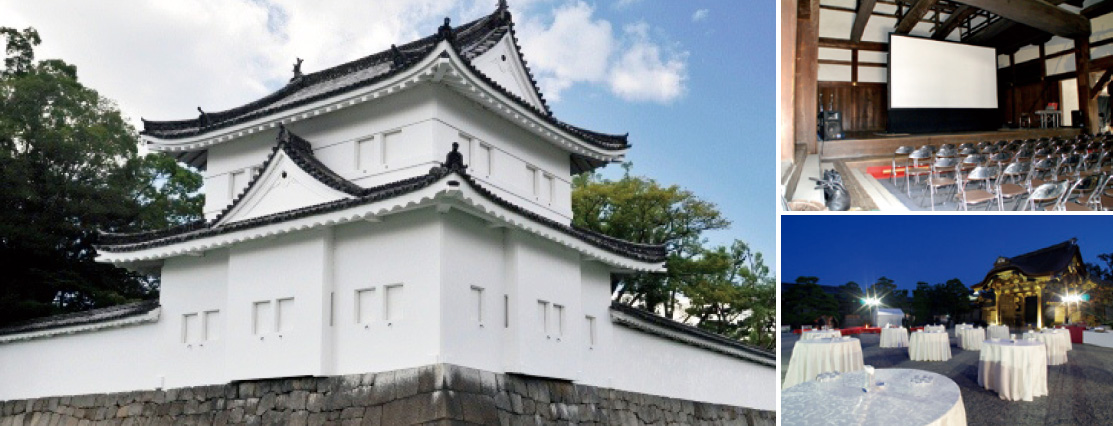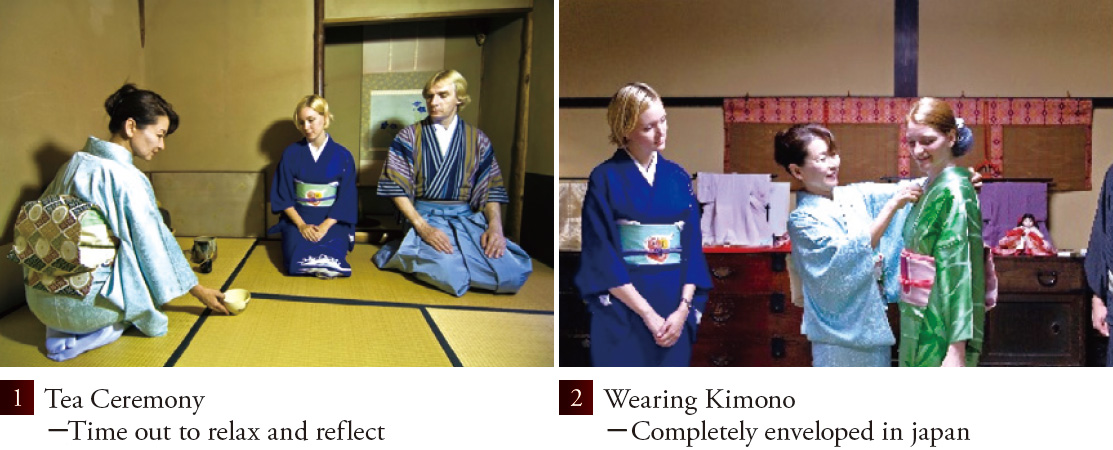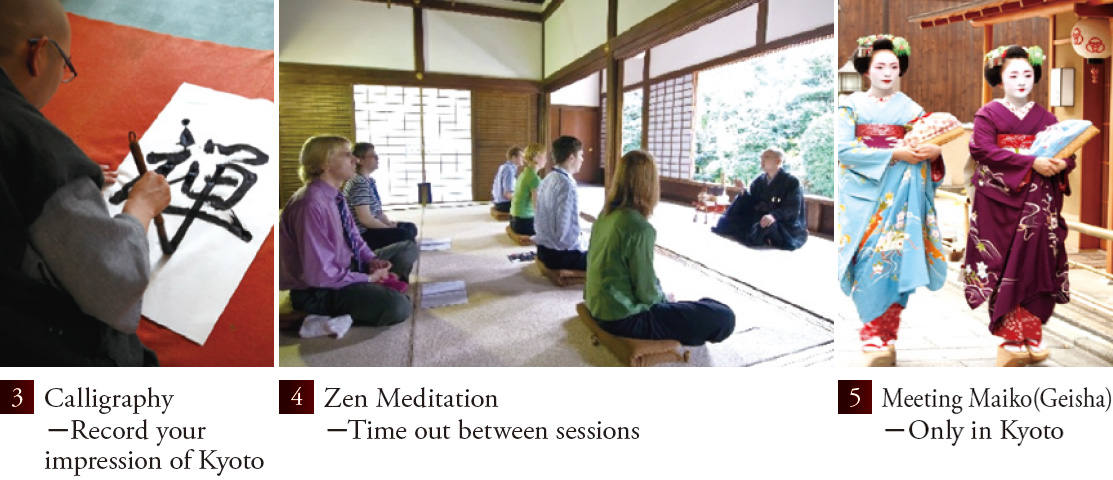WHY KYOTO
The most popular and essentially Japanese destination in Japan
Kyoto embodies 1,200 years of Japanese history and tradition including 17 UNESCO World Cultural Heritage Sites, and all in an easy-to-navigate compact space- the UNESCO sites are all located less than 30 minutes apart.
Tradition meets Innovation
In the city's long history, Kyoto has always been a center of cultural and technological innovation within Japan. Today, 47 universities as well as numerous research institutions and forward-thinking corporations proudly uphold Kyoto’s tradition of innovation on the world stage.
ABOUT KYOTO
All visitors to Kyoto are impressed by its 1200 years of history as capital of Japan: 17 UNESCO World Cultural Heritage Sites are situated in a cityscape dominated by 2000 temples and shrines. The friendly city of 1.5 million people offers endless opportunities for your congress to gain meaningful hands-on experience of rich Japanese culture through tea ceremony, sake brewing, kimono wearing, swordsmanship and more. Japan is renowned for its safety and the compactness of Kyoto makes for wonderful strolling during free time. From the moment of arrival at Kansai International Airport - just 75 minutes from the city centre - guests of Kyoto are pampered with clear multilingual signs and clean efficient transport choices.
Culture Heart of Japan
Kyoto is home to:
2000 Buddhist temples and Shinto shrines
17 UNESCO World Cultural Heritage Sites
Noh theatre Masterpiece of the Oral & Intangible Heritage (UNESCO)
Headquarters of schools of tea ceremony, flower arrangement,
Five schools of Maiko and Geiko geisha
Nijo Castle(Nijo-jo)
UNESCO World Heritage Site

Concept:
“UNESCO World Heritage Site Nijo-jo Castle MICE Plan” takes full advantage of the castle's historical value and dignity.
Tradition meets Innovation
Kyoto is home to:
Nintendo, Kyocera, Omron, Shimadzu, around 40 higher education & research institutions
Kyoto University has provided a large proportion of Japanese Nobel laureates
Ancient Capital
Take a guided tour of the Kyoto Imperial Palace, which was the residence of the Emperor for more than one thousand years. Then follow up with a walk on the incredible nightingale floor of Nijo Castle, the home of the Shogun who led the nation by force.
UNESCO
Enjoy a sample of the seventeen monuments that have been designated World Cultural Heritage Sites. Kamigamo and Shimogamo shrines mark the foundation of the city.
Sake
Fushimi in the south of Kyoto is famous for its pure water and high quality rice that combine to produce some of the finest sake. The scenery of the brewing districts has not changed in centuries and makes a wonderful atmosphere for viewing the production process and tasting the result. The Fushimi Inari Shrine dedicated to protecting the rice harvest is not to be missed.
Walking
The Arashiyama Sagano area is where local people go to relax in the countryside. The wide river, numerous temples, curiosity shops, and ancient countryside make for a pleasant stroll. A ride along the river on an open deck train; and river rapids ride are also recommended here.
Gardens
There are thousands of delightful private, public, and temple gardens to be enjoyed in Kyoto. A tour of lesser known spectacular gardens is the perfect way to entertain your guests.
Kyoto Cuisine
The variety of products and aromas at Nishiki Ichiba market always capture the imagination.
Let the market be your inspiration in the kitchen, on a Kyoto cooking tour.

KYOTO CULTURE ACTIVITIES
Kyoto offers you the opportunity to incorporate traditional Japanese culture into your programme: motivation & rewards; team-building; breaks between sessions; spouse programmes; optional tours; entertainment & attractions.












